Webinar Q and A: Check Valve Applications for LNG Service
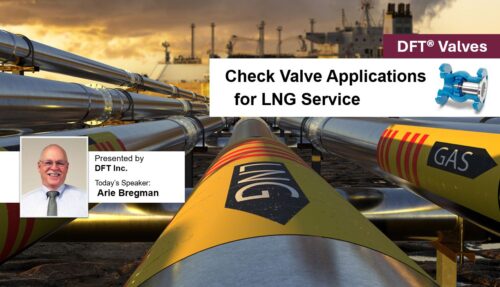 Following our webinar, “Check Valve Applications for LNG Service,” we’re sharing some of the questions from the audience along with our answers.
Following our webinar, “Check Valve Applications for LNG Service,” we’re sharing some of the questions from the audience along with our answers.
In the webinar, we covered the fundamentals of LNG processes and the specific check valves used in liquefaction, storage, and transportation. We also discussed optimal valve placement and the importance of proper valve sizing to ensure efficiency and reliability.
The webinar was presented by Arie Bregman, who brings nearly five decades of experience in the valve industry. His technical expertise and commitment to industry education make him the ideal guide for navigating check valve applications in LNG service.
If you missed the live event, you can now watch it on demand on the DFT® website—just click here.
Q: What problems will I have if I have a swing check in a vertical pipeline?
A: The main problems you will experience will either be the valve is stuck open and will not close, or there is a loud slamming sound that rattles the piping every time the pump shuts down. The DFT Axial flow check valve will solve these problems. Again, make sure you know the flow conditions and have the valve sized to insure you have a properly specified valve going in.
Q: What other options are there besides changing the spring when I am sizing a DFT Check Valve?
A: Besides changing the spring, DFT also can provide a travel stop to limit the amount of opening of the valve. Another option could be a reduced trim size internal to the valve or a nozzle style seat to increase the inlet pressure at the valve. These all have tradeoffs that you will need to discuss with your local DFT salesperson.
Q: What problems will I experience with an oversized check valve?
A: An oversized check valve will experience chatter. Perhaps you have heard the tap, tap, tapping of some installed swing checks? This is indicative of a low flow situation. Eventually this valve will experience excessive wear and will require a full overhaul or replacement. Make sure you size the new valve you put in or you will be doing this again real soon.
Q: I have a swing check installed but now want to change to a DFT Axial Flow check, does that require piping changes?
A: DFT manufactures valves to specific face to face standards. DFT has a valve that will replace any swing check or double door check valve with a direct swap out replacement. No piping modifications will be required.
Q: May swing check valve be used in LNG?
A: Yes, swing checks can be used in LNG applications, but sizing is critical. Swing check valves require a minimum flow rate of 8 feet per second (2.5 meters per second) in order for them to be fully open and stable. If your application does not achieve this flow rate through the valve you will experience chatter and eventually this valve will fail. DFT’s axial flow check can be custom sized by modifying the spring or installing a travel stop to put the disc in a non-chattering condition for low flow applications.
Q: How close can you put a check valve to a Knife gate valve, 8″ Ambient water
A: Physically you can mount a check valve directly to the knife gate valve, but the flow entering the check valve will be turbulent. This could make the internals of the check valve unstable (chattering) which will lead to premature wear and failure of the check valve. It is always recommended that at least 5X NPS of straight piping be placed between the knife gate and the check to allow the turbulent flow to return to laminar flow before entering the check valve.
Q: How can JT effects be minimized in check valves for LNG Service?
A: The sizing and configuration program that DFT has will provide you with velocities and pressure losses within the valve. By properly sizing the valve for minimum velocities JT effects can also be minimized.
Q: Our company prefers lug style DFT valves over wafer style. What are the advantages and disadvantages?
A: The advantages for a lugged style body can include, ease of installation, higher level of flange gasket and seal integrity in stable thermal environments as well as extreme temperature situations like an external fire, or even high temperature swings within the media itself. The only disadvantage is the added cost. I feel that this small cost premium for a lugged style body is often outweighed by these advantages.
Q: When sizing for downward flow, do you have to account to total head pressure?
A: Yes, total head pressure must always be considered.
Q: Can we get access to the DFT Sizing Programs?
A: Contact your DFT sales representative and they can work with you to provide sizing services based on your specifications.
Q: What information is needed to get a correct quotation?
A: All the flow information will be required for media, pressure, temperature, pressure, flow rate under minimum, maximum and normal operating conditions for each valve throughout the system.
For more than 80 years, DFT® Inc. has helped customers find and install the right check valves for their unique applications. To learn more about our valves and how we can assist you, contact us or find a DFT Sales Manager in your area.





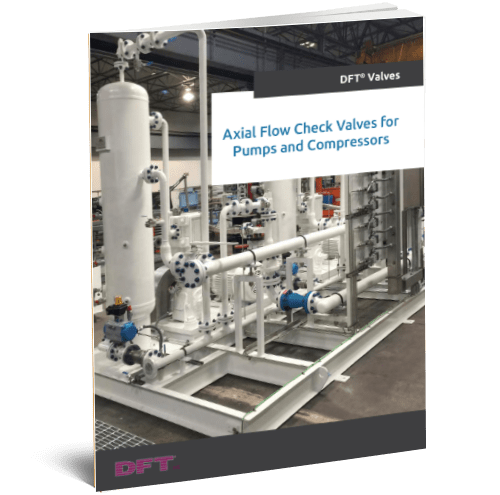
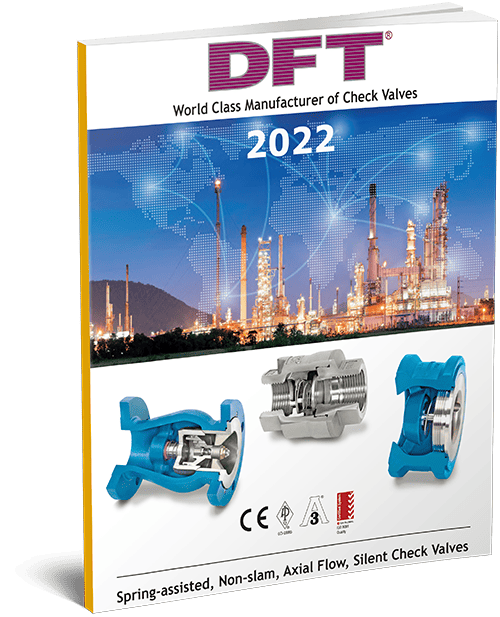


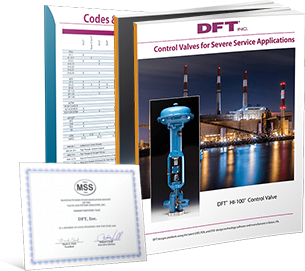
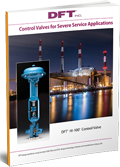
Comments are closed